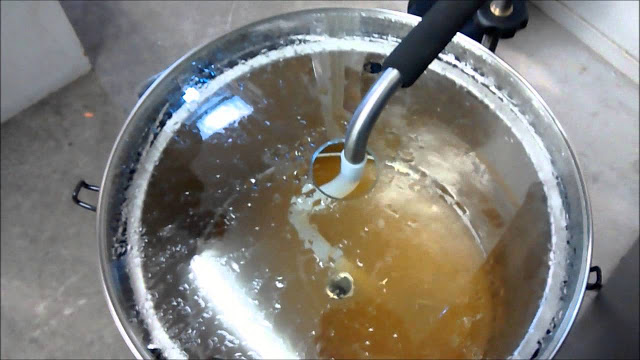This week we caught up with Dave from our UK office who’s been investigating how different mash times and temperatures can affect your beer, find out what he learnt below.
When I started all grain brewing I quickly learnt that changing mash temperatures allowed me to influence the enzymes that are active in the mash and therefore change the way my beer turns out. The table below shows some of the enzymes that work in the mash and the range of temperatures these enzymes are active in;
|
Mash Stage
|
Active Enzymes
|
Activity Range (°C)
|
Effect on Mash
|
|
Cell wall structure breakdown
|
Endoglucanase, beta solubilase, phosphatase
|
40 – 53
|
Starch granules in the grains are protected by a cell wall which has to be broken down before the starch can be converted.
|
|
Protein breakdown
|
Endo-peptidase, carboxy-peptidase, amino-peptidase, di-peptidase
|
45 – 50
|
At this stage of the mash the water-insoluble protein sheath is penetrated, allowing the starch to be reached. Protein molecules are broken down into their constituent amino acids which are necessary for healthy fermentation.
|
|
Starch breakdown
|
Beta-amylase, alpha amylase, limitdextrinase, maltase, saccharase
|
35 – 75
|
Starches are broken down into fermentable sugars.
|
It is also possible to change the outcome of the beer by manipulating mash times as well. In a 2008 article, Kai Troester was able to effectively demonstrate that the majority of starch conversion in the mash was complete in the first 15 minutes (at a temperature of 67°C).
Why then do so many brewers stick so rigidly to mash times of 60 or 90 minutes? I wanted to experiment with mash times so I brewed the same recipe imperial stout three times with different mash temperatures to see which would work best.
My recipe was;
64% Marris Otter
10% Munich
9% Brown Malt
4.4% Roasted Barley
4.1% Dark Crystal
3.7% Chocolate Malt
3.7% Amber
1.1% Black Malt
Imperial Stout – 20 minute mash time
An imperial stout is a big beer so the ABV should be high and it should have enough body to carry the huge malt flavours without being cloying or overly sweet. By keeping the mash extremely short and the temperature at 66.7°C I ended up with a low extract efficiency (61%) and a low fermentable extract efficiency 45.2%. This translates as a low original gravity (and therefore low ABV) but a full bodied beer. The full body is good for a beer of this style but the low ABV was not what I wanted for an imperial stout.
Imperial Stout – 60 minute mash time
This is my normal mash time for beers like this. Mashing for 60 minutes at 66.7°C led to an extract efficiency of 62.8% and a fermentable extract percentage of 48.5% giving me a high original gravity and highly fermentable wort (which helped to reach my desired ABV) that finished fairly dry but with enough body to work well.
Imperial Stout – 120 minute mash time
Again, I kept the mash temperature at 66.7°C. A longer mash time gives the enzymes more time to work on the starches and therefore results in a highly fermentable wort which is great for higher ABV beers, but it also produced a slightly thinned out, drier beer which is not ideal. This mash gave me a 63.6% extract efficiency and 50.7% fermentable extract efficiency. This meant that I managed to get a high ABV beer but without the body or rich thick mouthfeel I wanted from my stout.
Conclusions
From experimenting a little with different mash times I learnt that it definitely is possible to affect the profile of the finished beer. However, when using a shorter mash time (and 20 minutes is an extreme example of this) the extract efficiency is dramatically reduced, meaning you are using a greater amount of grain to make a lower gravity wort. This is likely because at this stage of the mash the enzymes are still working on solubilising the starches and so reducing the mash time is a really inefficient use of your malts.
As for going the other way and increasing the mash time, you can see from the results that an extra hour of mashing only resulted in a slight increase in extract efficiency and a similar fermentable extract percentage to a 60 minute mash. This is due to the fact that enzymatic activity decreases as mashing proceeds. There is only so much starch that can be converted in a given grain bill so mashing for longer periods does not automatically equal a more fermentable wort. For the extra effort and time added on to your brew day you’re probably best using a 90 minute mash with a lower temperature (65°C for example).
What’s really interesting is the results of combining mash times with mash temperatures. By doing this you can see that mashing at a higher temperature will be quicker at reaching its maximum extract efficiency but this will be lower than if you were to mash for longer at a lower temperature. According to Kai Troester this is because the beta amylase enzymes are more stable at the lower temperature and so although they are not initially as active, they are active for longer.”
Have you ever experimented with mash times?
